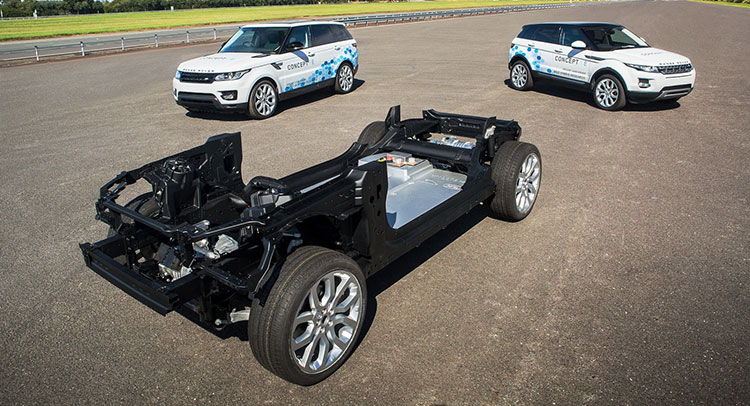How many electric-powered or hybrid production Land Rover and Jaguar vehicles have you seen – one?
Although the two brands (owned by the Indian automotive manufacturer – Tata) constantly develop state-of-the-art technologies and implement James Bond-approved gadgets on their products, the companies still lack a broad hybrid-powered line-up. But not for long, as Jaguar Land Rover revealed a unique electric Drive Module (eDM) technology that could be used to create future low and zero-emissions vehicles.
Three Concept_e powertrains were showcased at this year’s CENEX Low Carbon Vehicle event, which include the new, unique high-performance modular electric drive module – developed in house by Jaguar Land Rover – capable of producing twice the power and torque of any electric motor-generator in production today. These can be inserted between any engine and transmission to create MHEV (hybrid system), PHEV (plug-in system), or used alone for a BEV (electric drive system).
“This is a long-term Jaguar Land Rover research project exploring all aspects of future hybrid and battery electric vehicle technology. The three Concept_e vehicles will allow us to test and develop exciting new potential technologies that could form part of our low and zero emissions vision beyond 2020”, said Dr Wolfgang Epple, Director of Research and Technology, Jaguar Land Rover.
The Concept_e MEHV – Mild Hybrid – is based on a Range Rover Evoque and features a prototype 88 Hp diesel engine and a 48V electrical systems that feeds a 15kW crank-integrated motor with disconnected clutch. The motor is located within a hybrid module sandwiched between the engine and the 9 speed transmission.
The Concept_e PHEV is similar to the MEHV rig, but employs a 295 Hp prototype petrol engine and an 8 speed transmission longitudinally mounted within a Range Rover Sport. The electric motor develops up to 150 kW and also takes the function of the starter motor. The systems draws the juice from a 320-volt lithium ion battery pack, fitted in the boot.
Conept_e BEV is a bespoke research demonstrator, based on Jaguar Land Rover aluminum vehicle architecture, which has incorporated electric axle drive. The the 70 kWh HV lithium ion traction battery pack has been mounted as low as possible, while the rear drive unit features a twin-speed transmission coupled with a 145 kW electric motor and the front drive unit features a single-speed transmission coupled with a 85 kW electric motor.







